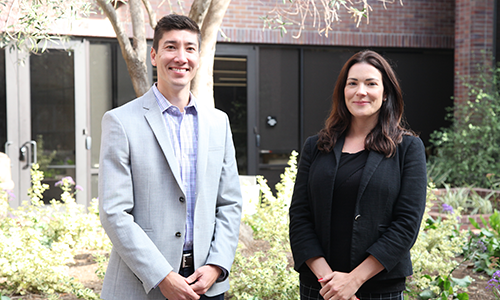ESR Continuity Planning Team Helps Users Navigate Change
 Enterprise Systems Renewal (ESR) means change for UC San Diego. Big change – in terms of how we work, access data and connect systems.
Enterprise Systems Renewal (ESR) means change for UC San Diego. Big change – in terms of how we work, access data and connect systems.
The people helping individuals and departments work through change are Say-Ho Tan, Jessica Pohle and Angela Carpenter from the ESR Continuity Planning team. Say-Ho is the change manager and business systems analyst, Jessica is the project manager and Angela is the business systems analyst.
But to backtrack a little, what is ESR Continuity Planning again? It supports the continuation of local business operations as new systems come online and old systems are retired. The goal of the ESR Continuity Planning project is to provide a smooth transition for business and process owners.
You might recall being asked to complete the campus Data Use Inventory to document data needs or business processes that interface with legacy systems like IFIS financial, ISIS student and PPS human resources and payroll. About 1,200 items and counting are in the inventory. It’s Say-Ho and Jessica’s job to systematically work through the inventory and help business process owners transition to a future state.
“The way you get data is changing,” Say-Ho emphasizes. “For example, if an application you use relies on data from PPS, planning and change will be required to ensure business continuity once UCPath goes live. ESR Continuity Planning is here to help you work through this transition.”
Say-Ho and Jessica facilitate the four-step ESR Continuity Planning process, which is designed to determine how the need will be met in the future. Many business process and data needs will be met directly through a new enterprise system or a Data Activity Hub. For applications that satisfy requirements not met by new enterprise systems, the Continuity Planning team assists with planning of remediation required to connect to data sources in the new ESR sytems.
Say-Ho and Jessica would also like to highlight two things: the inventory is still open, and the Data Inventory Status report shows where inventoried items are in the process.
The team is working through the inventory from a few different angles. Health items are a priority in order to meet patient-care needs. Additionally, the ESR timeline guides work. For instance, processes impacted by Kuali Research, UCPath and Oracle Financial – all coming online in 2020 - would be addressed before items relating to projects on longer timelines. Many items in the inventory originate from IT Services, and are already being worked on. For everything else, the team is going VC area by VC area to work through the list.
“We’re learning a lot about the vast array of systems out there and the way people manage their work,” says Jessica. “We’re also discovering duplicate applications across departments – that is, multiple applications that do the same thing. We can help add efficiencies with one system that meets multiple needs.”